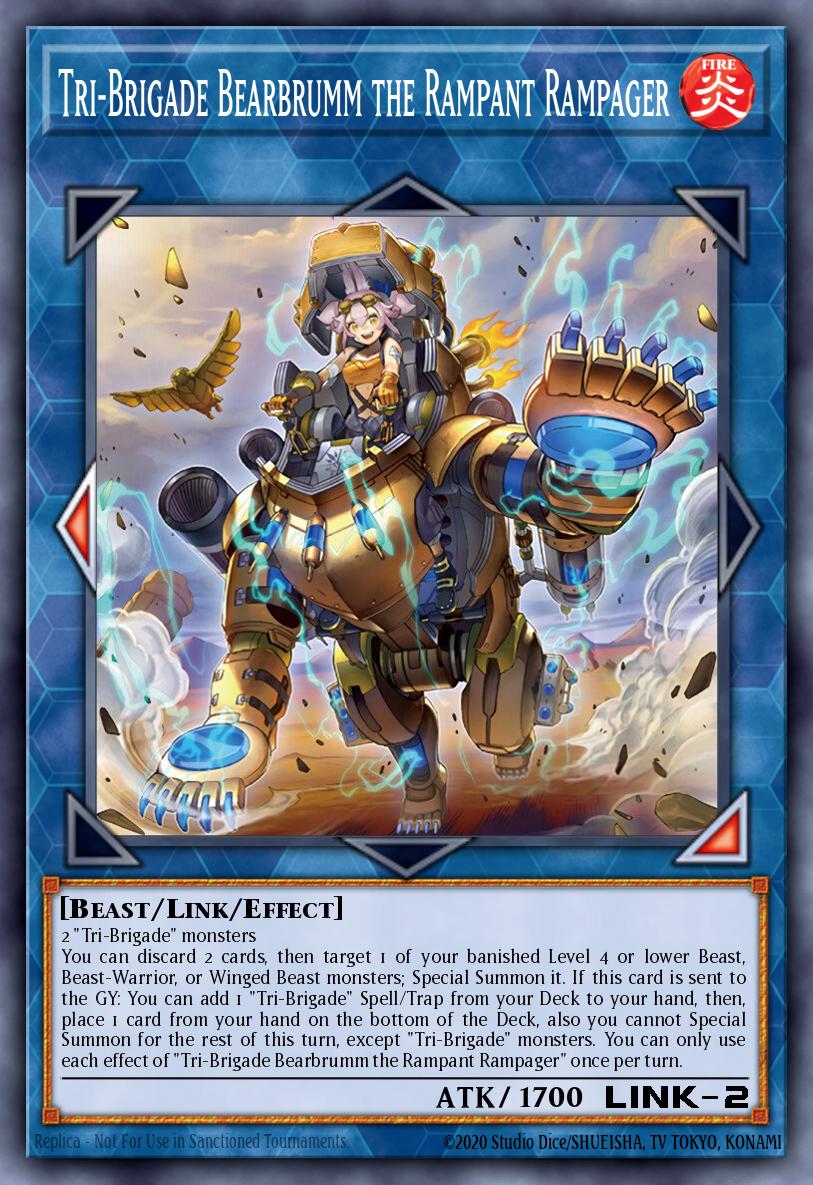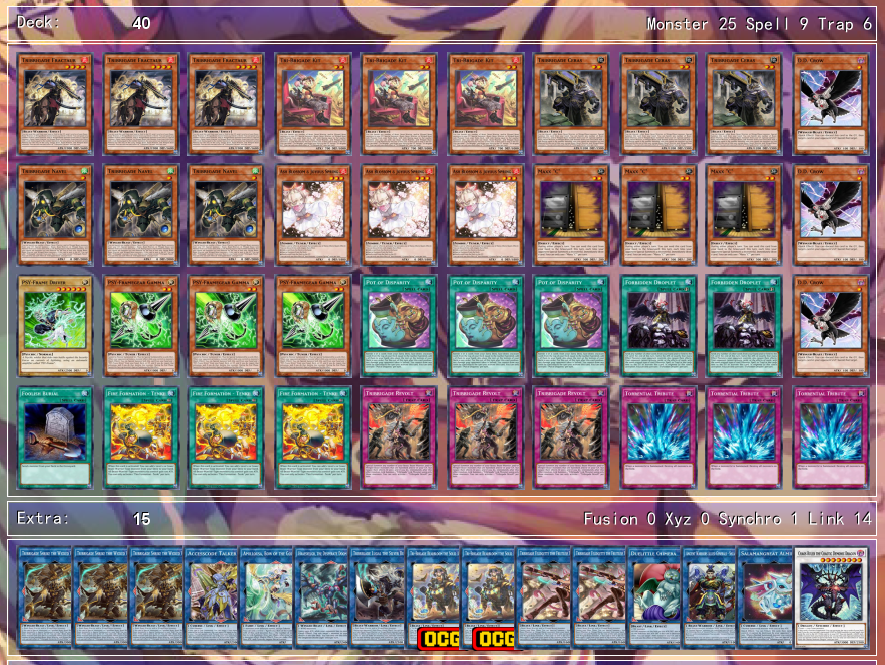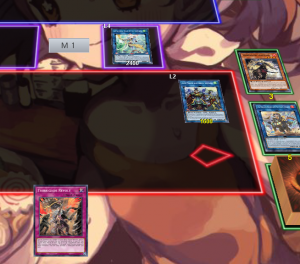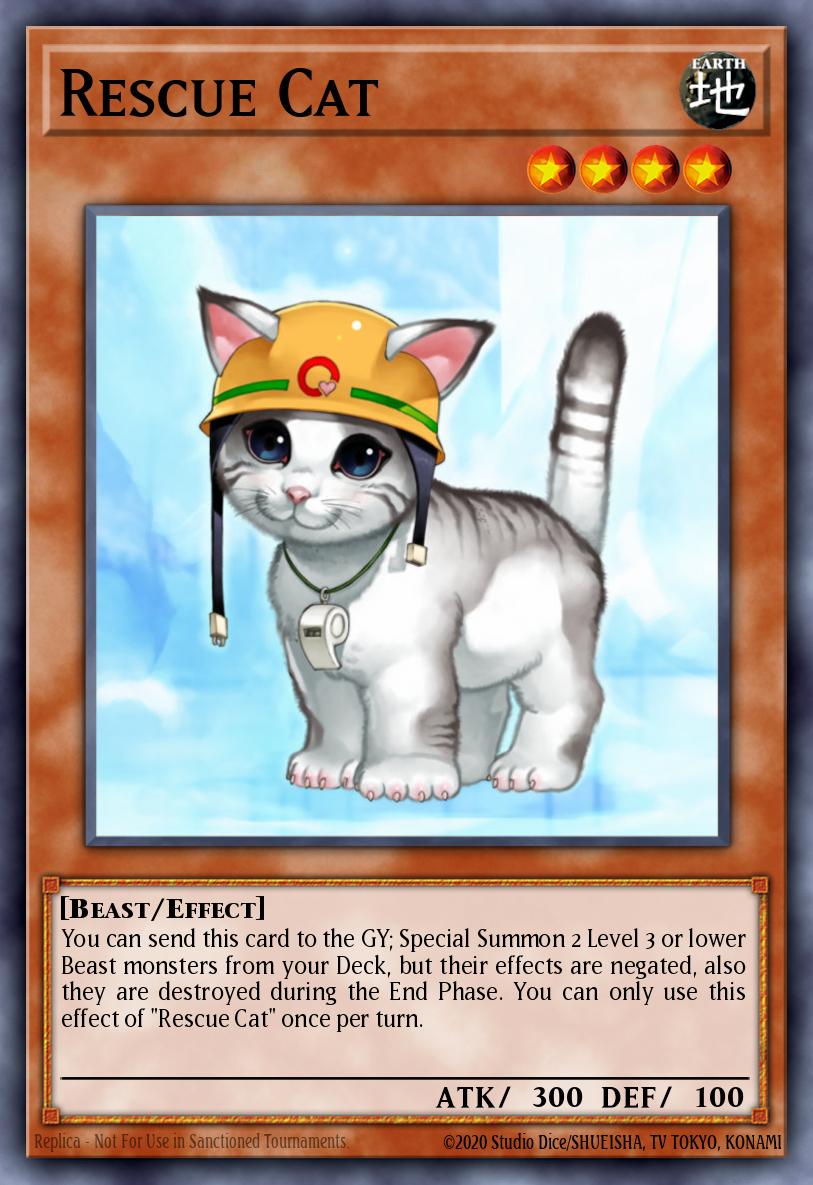Introduction
A few months back, I wrote an article detailing almost every relevant combination and deck variants around the currently popular archetype "Tri-Brigade," as it saw several hints of success in the OCG.
If you have not read my previous article, I would suggest it as this article as intended as a follow-up to that article.
Now as several notable TCG tournaments such as LCS, Extravaganzas and even PPG has dedicated pilots on the deck, I believe an updated review is in order. It is safe to assume that Tri-Brigade, or fondly referred as "Bird Up," has easily settled within the meta.
However, this article will revolve around the inclusion of Bearbloom, an upcoming Tri-Brigade support ready to appear in the next set Lightning Overdrive, and how her presence completely inverts the deckbuilding process of Tri-Brigade.
A Late Bloomer

Tri-Brigade Bearbloom the Heavy Hitter
2 "Tri-Brigade" monsters
- You can discard 2 cards, then target 1 of your banished Level 4 or lower Beast, Beast-Warrior, or Winged Beast monsters; Special Summon it.
- If this card is sent to the GY: You can activate this effect; you cannot Special Summon monsters for the rest of this turn, except "Tri-Brigade" monsters, also add 1 "Tri-Brigade" Spell/Trap from your Deck to your hand, then place 1 card from your hand on the bottom of the Deck. You can only use each effect of "Tri-Brigade Bearbloom the Heavy Hitter" once per turn.
In my previous article, I made the mistake of boldly declaring Tri-Brigade had no way to search of Spell/Traps, especially the coveted Tri-Brigade Revolt. With Bearbloom's second effect, you can now consistently rely on seeing a set Revolt every turn.
Bearbloom serves as a fantastic extender with her first effect to revive a banished Tri-Brigade monster. This effect will occur frequently, especially with Nervall's card advantage, allowing the player to resolve more Tri-Brigade monster effects within the same turn. This is excellent for cheating advantage in a simplified game state.
The second effect is Bearbloom's more relevant effect. Simply by letting her touch the GY, she will trade a card for Tri-Brigade Revolt, Tri-Brigade's biggest win condition. However, she will lock you into Tri-Brigade summons after, so the Simorgh Strategy has to go. Thankfully, the OCG has finally refined the eventual decklist, resulting in a Tempo - Pure playstyle.
The below is a sample decklist that you may find different to the current variant of Tri-brigade.
Pure Tri-Brigade Power

Due to Bearbloom's restrictions, the current Tri-Brigade playstyle has settled into a simple 3-of of every Tri-Brigade monster, with disruptions filling the rest of the spots. Due to the pure playstyle, this card can now exclude Barrier Statue of the Stormwinds, Mist Valley Apex Avian and Tri-brigade Rendezvous, making this deck way more consistent.
Barring the Maxx "C", this list can easily be replicated into a TCG list. The current deck will aim to search and resolve Revolt every turn, and here is the combo that we have established for such a strategy.
Fraktall + 3 Discards = Apollousa + Double Dragon Lords + Revolt
What? This combo also starts with Fraktall? This monster is too broken... Anyway, you should begin the combo with Fraktall in hand, and 3 other cards from your hand. 3 additional cards may seem costly, but I will explain why this combo pays off eventually.
- Discard Fraktall to mill Kitt.
- Kitt activates, to mill Nervall to GY.
- Nervall activates, to add Kerass from Deck to Hand (you may pick any other Tri-brigade, but I prefer Kerass.)
- Normal Summon the added Tri-Brigade (Kerass in this case.)
- Use Kerass by banishing 2 monsters to summon Bearbloom.
- Activate Bearbloom by discarding 2 cards to summon one of your banished Tri-Brigade from your Banished (I will use Kitt.)
- Activate Kitt by banishing 2 monsters to summon Ancient Warrior - Double Dragon Lords.
- Using Kitt, Kerass and Bearbloom, Link Summon Apollousa, Bow of the Goddess.
- Activate Bearbloom to swap a card in hand for Revolt.
Your eventual endboard will be Apollousa, Double Dragon Lords and a Set Revolt. Sometimes, you might end with only Apollousa and Revolt, but that is fine. You can also play around Bearbloom's hefty discard by utilizing Ferrijit.

Although this board may look unimpressive at first glance, this board is deceptively hard to break. Revolt and Double Dragon Lord will guarantee Apollousa's Safety, while Apollousa will deny any handtraps from preventing Revolt from resolving.
This particular setup is fantastic against the current meta of Drytron, Virtual World and Dragon Link.
Once your Revolt resolves, you will be banishing one card from your opponent's side, adding one Tri-brigade for follow-up, and Shuraig itself will add an additional card by leaving the field, which could be yet another Tri-brigade or D.D. Crow. This easily makes up for Bearbloom's earlier disadvantage, so this combo is not that unrealistic.
In fact, this variant of the deck is more successful then the Simorgh Statue variant! Several factors may include a lack of bricks, Bearbloom being a fantastic extender, and the current meta.
Trying Tri-brigade Techs
As this variant has allowed for more flexibility, even more techs have been explored. I will briefly list them out and describe them in detail.
- Duelittle Chimera
Although a strange addition, this little critter is key to playing around several interruptions, as well as retrieving a Fraktall/Kitt to reuse on the following turn. - Peropero Cerperus
Cerperus is a fantastic counter to decks playing too quickly! This growling creature will hinder opponents looking to conclude games too quickly. But his selling point comes from Revolt which recycles Cerperus for another pop! - Fabled Cerburrel
In fact, mixing the fabled engine might not be so bad. Kerass and Bearbloom often pitches a Tri-brigade name, resulting in an unfortunate loss of advantage. If you happened to discard a beneficial discard, you may extend greatly from there! Fabled Cerburrel can Tune with Kerass to Synchro Summon Herald of the Arc Light or The Fabled Unicore, so you can play on without fear. - Danger!
Danger! Bigfoot and Danger! Thunderbird are both respectable monsters without a heavy cost to summon. In fact, Danger! Thunderbird may contribute to the existing Bird Up Strategy as a Winged Beast member. These dangerous additions allow you to deal with problematic backrow as well, like Skill Drain and Macro Cosmos. Or just serve as a heavy vanilla hitter.

- Rescue Cat
Rescue Cat is one of the best starters for the deck, especially when Infinite Impermanence is no longer commonly played. It also serves as a bait against Ash Blossom to activate your PSY-Frame Gamma when activated, and easily snowballs into advantage by itself. In fact, here's a Rescue Cat Combo.
Rescue Cat + 1 Discard = Apollousa + Revolt
- Normal Summon Rescue Cat
- Activate Rescue Cat to summon Kerass and Kitt from deck.
- Using Kerass and Kitt, Link Summon Ferrijit.
- Activating Kitt, mill Nervall from the deck.
- Using Nervall, add Fraktall from the deck to hand.
- Activate Ferrijit to special Summon Fraktall from hand.
- Using Fraktall, banish 2 monsters to summon Bearbloom.
- Fraktall, Bearbloom and Ferrijit will be used toLink Summon Apollousa.
- Using Bearbloom in the GY, swap one card in hand for Revolt.
If you happen to have another 2 cards to discard, you may use Bearbloom to summon a banished Tri-Brigade. It will then cheat out Double Dragon Lords, resulting in the same field as the first mentioned combo.
Rescue Cat may be a superior card, but players are now cutting it in favor of even more interruptions. A normal Tri-brigade hand may also accomplish what Rescue Cat can do, so it might be unnecessary in the first place.
To the Tri-brigade Turnabout! Again!
Now that Tri-brigade has established a completely different end board, the gameplan against this archtype has to change too.
Aside from the usual Handtraps like Lancea, Ash Blossom, you may want to try shotgunning your interruptions, lest they develop too much fuel in the GY. An example would be to Skull Meister a Kitt resolving in the GY, while there is no other fuel in the GY.
Against an established board, you should always deal with bankrupting Apollousa and Double Dragon Lords, or force out the Revolt. Perhaps, it is time for Infinite Impermanence to return to the main deck. As a side note, Nibiru is pointless against this variant, as Revolt will resolve under Apollousa, or during the End Phase.
This deck's natural weakness are backrow decks, so feel free to set 5 cards facedown, and watch them panic. A well timed Torrential Tribute also disrupts the entire gameplan, so just try to survive a few waves of Revolt!
My Thoughts and Conclusion
Last time I mentioned putting in three times the effort, now I fear the possibility of writing three articles about Tri-brigade alone. But that is exactly how much potential it has! And we already have seen plenty of positive results from this deck. Like all beasts, this deck will continue to evolve over time. I am genuinely surprised at the appearance of a completely different playstyle, so I chose to write about it.
In fact, this deck has already won me a few Dogmatika Ecclesia Sleeves! I hope this deck will treat you readers as well as I did, and don't be scared of Maxx "C".




